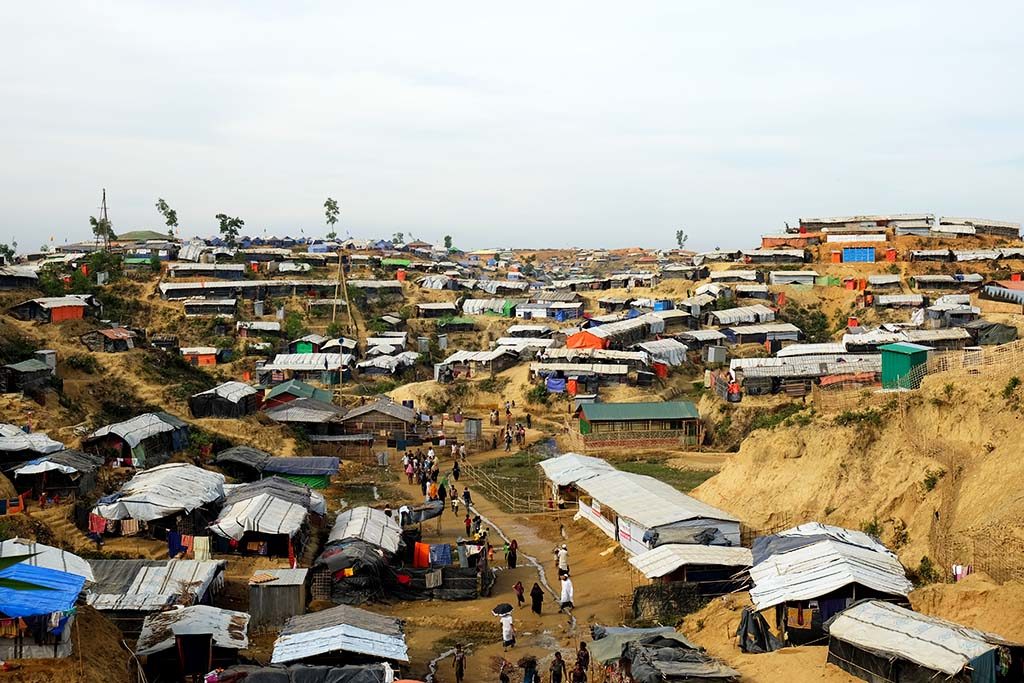Four and a half feet of rain – more than the annual rainfall of New York City, and almost four years’ worth of rain for LA. That’s the amount of water that’s forecast to fall on the Rohingya refugee camps in Bangladesh over the next five months.
That may not seem such a problem, but take a quick tour of the camp with me in this 360-degree video and you’ll see why we’re concerned. (Note: Safari doesn’t support 360-degree videos. But if you’re using Safari, you can still watch the video on Facebook!)
Less than nine months ago, this camp didn’t exist. It was an area of rolling hills with trees and other vegetation that could absorb the rains. Now, many of these flimsy tarpaulin and bamboo-made huts are at risk, as the monsoon rains arrive.
We’re worried about mudslides, as the banks that are holding many of the huts no longer have the tree roots to hold them together. We’re worried about toilets and waste water overflowing in areas packed full of people. And we’re worried about diseases spreading in the cold, damp homes.
Our local Bangladeshi team and Rohingya volunteers have already provided emergency support to more than 65,000 refugees. They’ve made sure they have safe drinking water, food, blankets and access to washrooms. They’ve also provided safe spaces for women so they can get support from trained counselors for what they’ve been through, and start to envisage their future.
The women that I spoke to in the camps told me they were happy to have reached the camps, as they felt safer and could sleep without the fear of being snatched from their homes by the Burmese military. As they face their latest challenge, they must not be ignored.
We’re supporting people in the most flood-prone areas of the camp to move to better accommodation. We’re also training a network of volunteers in cyclone and flood response, and doing drainage management work to try to stop shelters, washrooms, food distribution areas and women’s safe spaces from flooding.
If you’d like to support this work, you can do so here.

